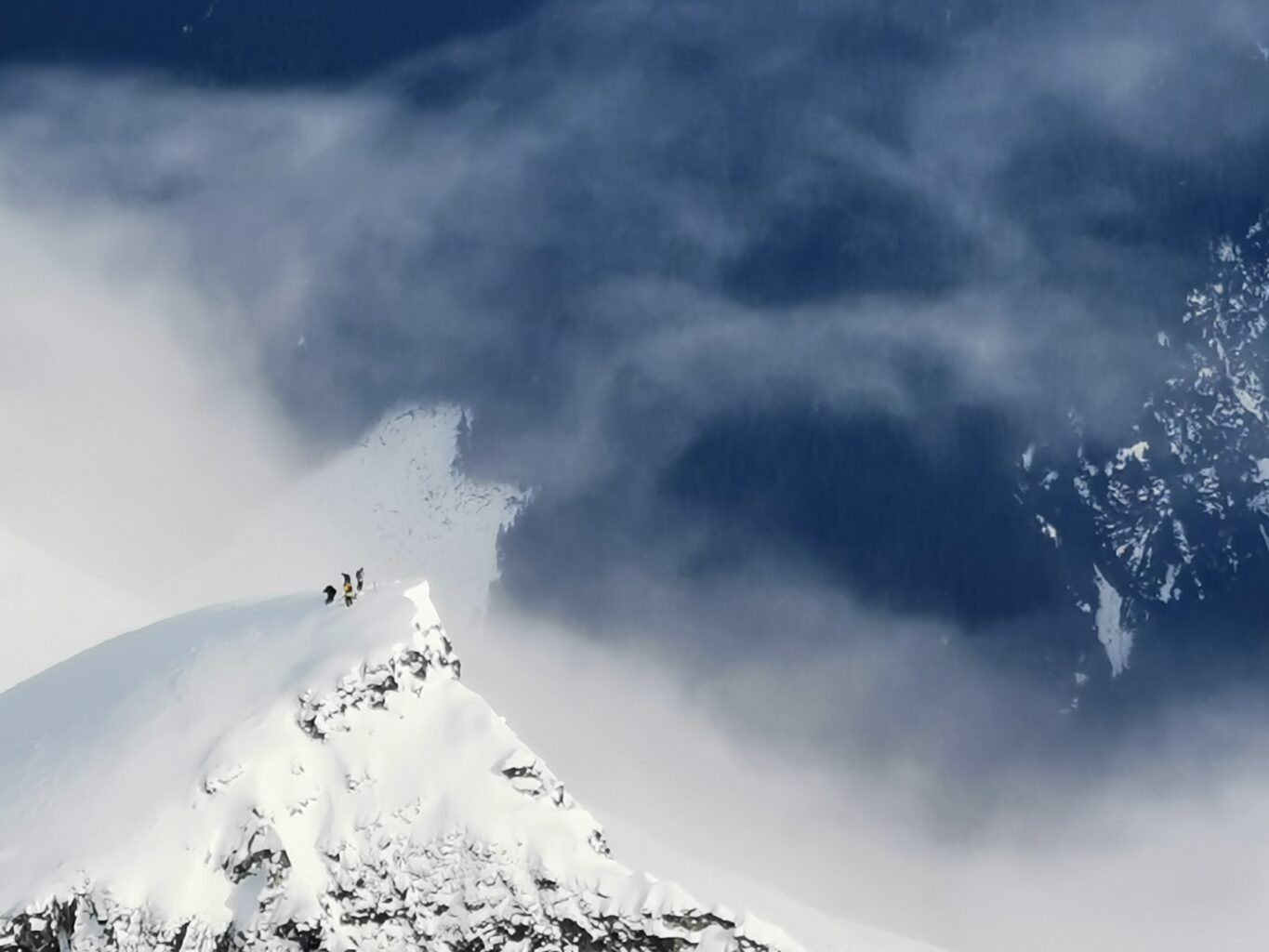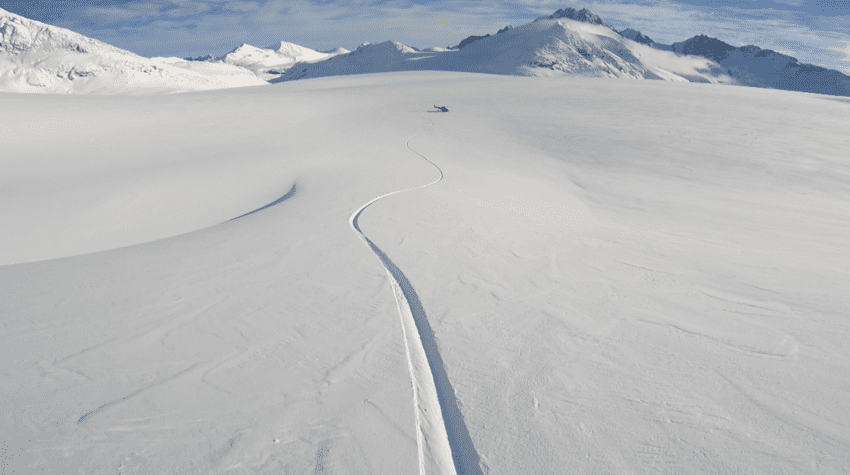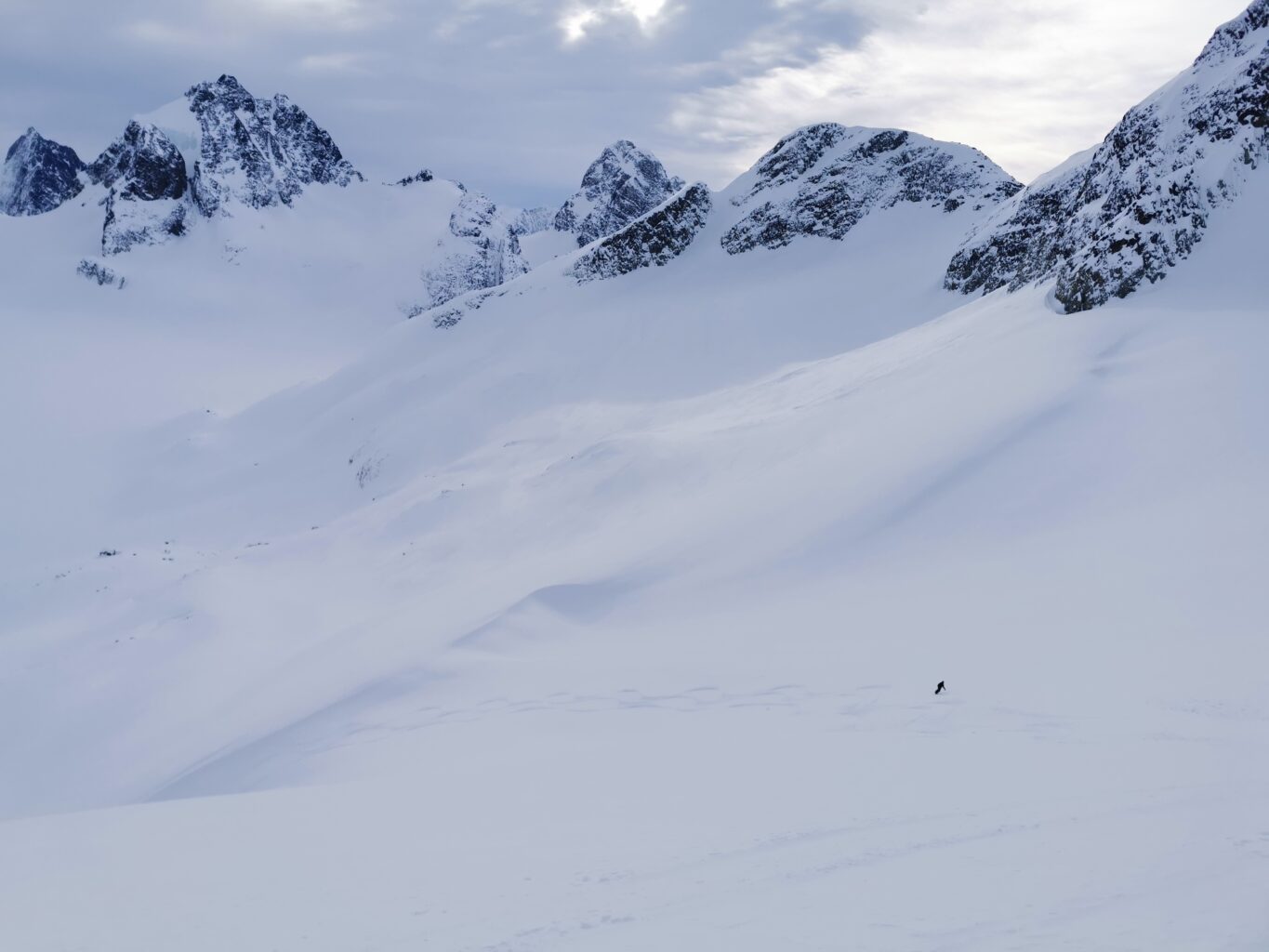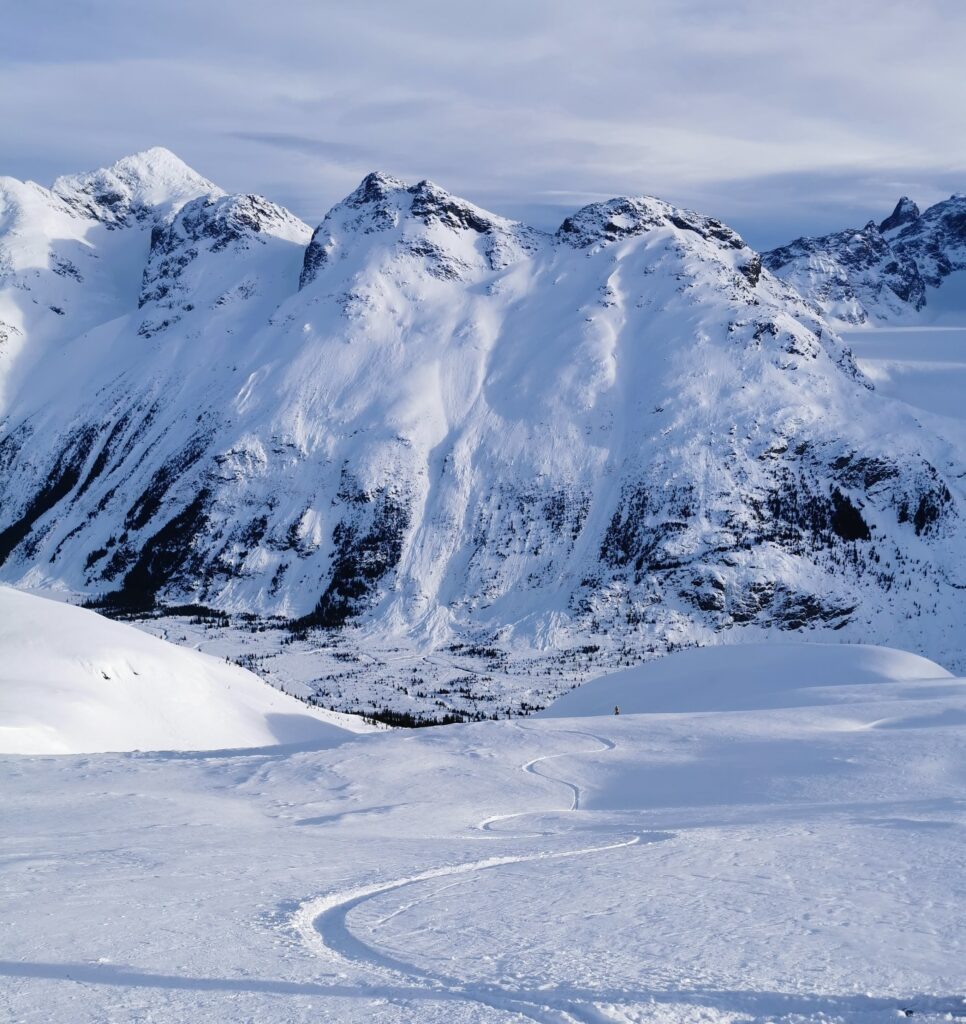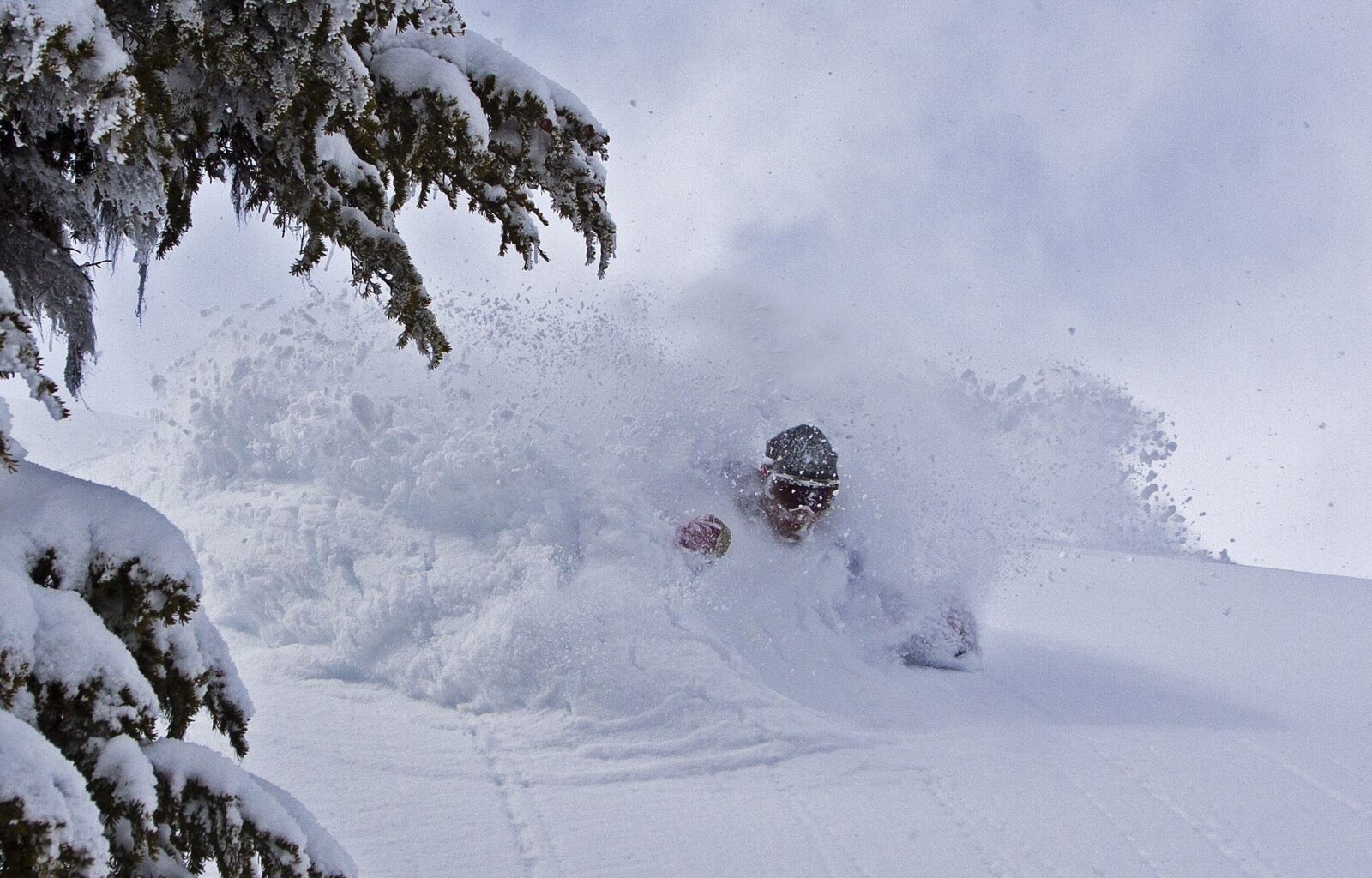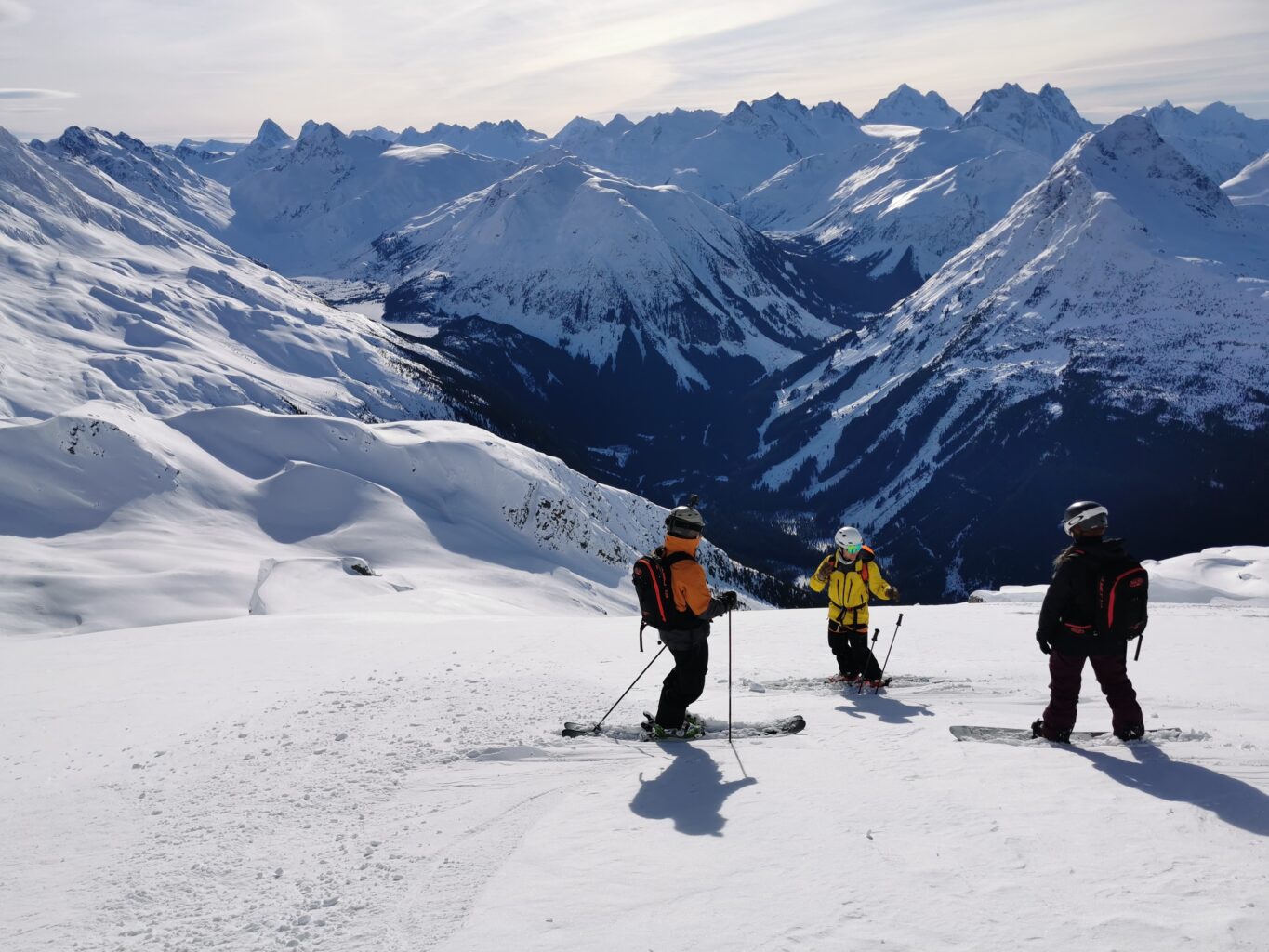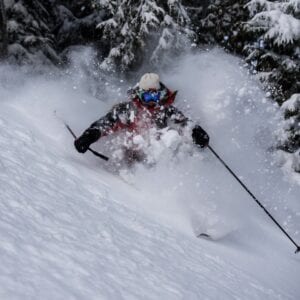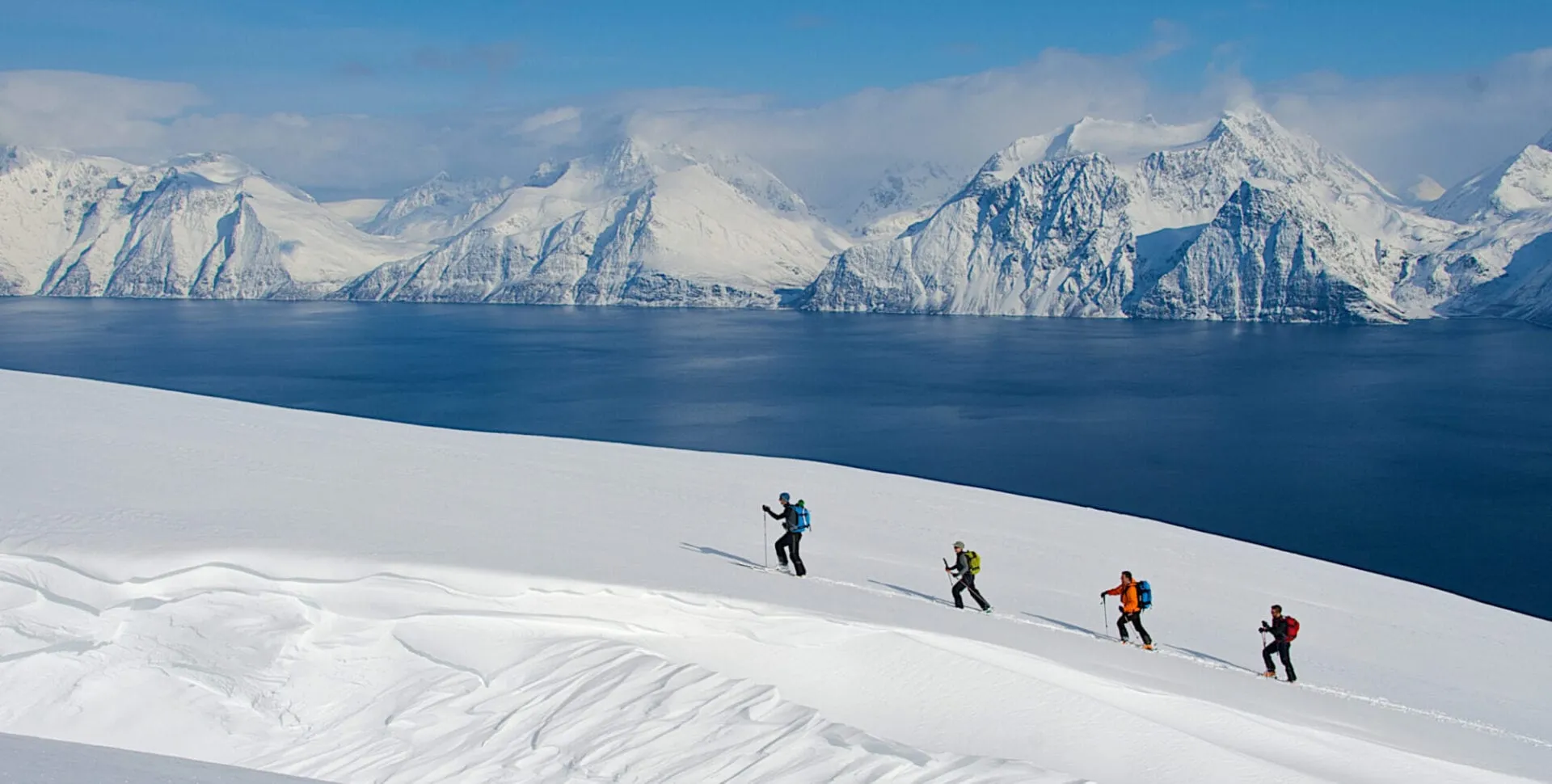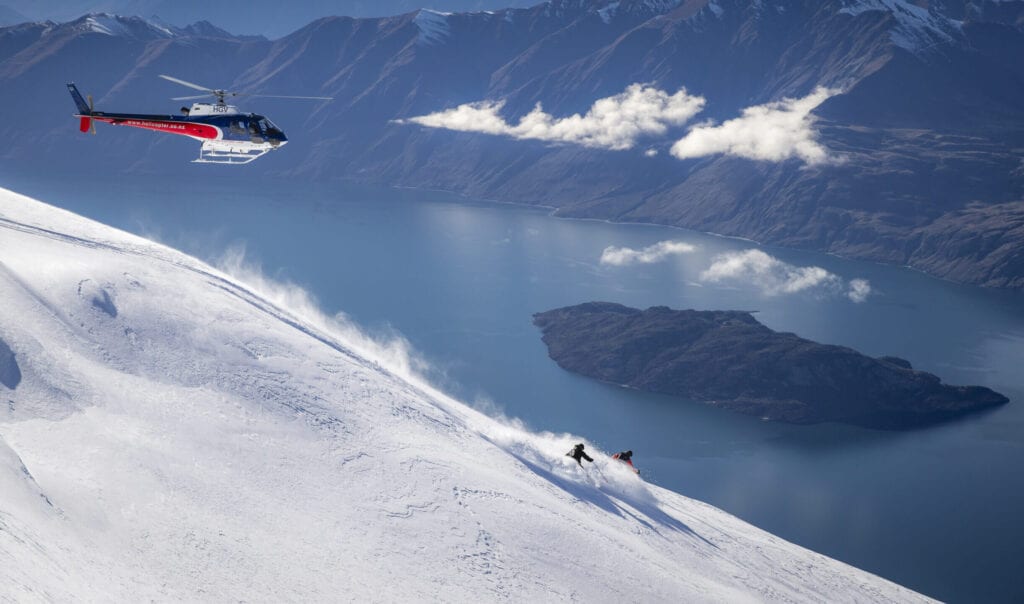
Whilst in the past you did have to be an exceptional skier to go heli-skiing (mostly because skiing powder on retro skinny skis takes skill and athleticism), the good news is that now heli-skiing is more accessible for a greater array of snow lovers… and we have new powder ski technology to thank for this. In fact, there are a few variables that affect your ability to heli-ski, so if you’re unsure about your skill level and whether you’re fit enough to tick heli-skiing off your bucket list, read on.
Do You Have Powder Experience?
If you have no idea what powder skiing or “off-piste” is, then maybe you’re a ‘no’ for now, but if you can make it down ungroomed, bumpy and variable snow conditions (slush, chopped-up powder and crud) without tumbling every other turn, then you’re looking good. If you regularly hunt down bumps, mogul fields and fresh powder – and manage to ski these with a semblance of confidence – then let’s get you booked in…
Minimum Ability Required To Heli-Ski: Steep Blue Runs
You’re already looking good if you can make strong parallel turns with a pole plant, or link flowing, uninterrupted turns on your snowboard, down a steeper blue or mellower black run. If you can physically pull this off but are scared throughout, find yourself leaning back into the mountain, and moving slowly without flow, then it might be worth booking in a couple of off-piste lessons before taking on the chopper. Either way, we will make sure you are not in over your head when you do arrive at the lodge.
Not quite matching up to the descriptions above but desperate to get out and try it? Don’t worry, there are other options out there. Heli-skiing in New Zealand offers a more mellow experience, making it a great option for a first heli-ski experience. For an even gentler experience, skiing the Tasman Glacier is a really exciting entry-level backcountry ski or snowboard day accessed by ski plane and suitable for intermediate skiers. Still too much? Why not take a helicopter to the top of a snow capped mountain where we can set up a gourmet lunch and wine tasting – the perfect way to break up a ski trip.
Operators across British Columbia, Canada have strived to make heli-skiing more accessible, and now most lodges cater to advanced intermediate skiers and above. The sheer amount of terrain, and small group heli-skiing that we typically recommend makes BC a much more welcoming environment to the first-time heli-skier than it did previously.
Just Enough Speed Is Your Best Friend In Powder
You definitely don’t need to be a speed demon to ski powder, but you do need to understand that without enough speed your skis or snowboard will sink down deep into the snow and make it really hard to turn. Before you know it you will be huffing and puffing, throwing your upper body around and not having a great time. Less is more in snowsports and while riding powder can be relaxing and effortless, it can only be so when you have enough speed for your skis or board to lift up out of the snow and float (just like a boat as it speeds up). Again, ski technology has improved at such an exponential rate in the past few years that deep powder skiing is no longer the thigh destroying schlep that it used to be (although we still recommend getting those squats in beforehand!).
Some heli-ski terrain can be mellow with a similar gradients to blue runs in resort and it’s likely that your first few runs as a beginner heli-skier will be on these types of slopes. However, you will still need to have enough speed and athleticism to make turns in powder if you want to meet the helicopter at the bottom of the run. Get some tips on how to ski powder like a pro before you go.
You Do Need To Be Relatively Fit
You don’t need to be Ted Ligety fit, but you do need to be able to make a series of 30–40 two-footed side-to-side jumps without needing to chug a bottle of Gatorade and have a lie down after. Fortunately, modern powder skis have made life a little easier, but again – don’t forget those squats! You’ll be amazed how much just a few weeks of preparation before the trip can make.
For snowboarders, it is a lot easier to make turns as the powder boards just glide effortlessly down the mountain; however, you do need to be good enough to navigate around trees and terrain features if that’s where you’re heading. You will also need to be skilled enough to keep your vision up and ride with enough speed so you do not get stuck in the natural dips and trenches of backcountry terrain. Long, floaty powder boards are ideal, and most heli-ski operators will provide these free of charge if you don’t have one. If you’re looking for a great powder board, check out Prior Snowboards, one of our local custom board makers here in Whistler.
Having The Right Equipment
Most operators have an artillery of the very best powder skis and snowboards on offer. If you are a heli-sports newbie you are better off using their rental gear, as they will have much more powder-specific equipment than the skis or snowboard you may have, unless you are used to skiing deep powder on a regular basis. I’ve seen a lot of people turn up with their own favourite in-bounds “powder” ski/snowboard, only to discover that it’s entirely inappropriate for deep snow, so just ask one of our team and we’ll be happy to help. If you have your own boots, then great – your rental technician will be able to fit a air of powder skis to these.
Powder skiing in the resort is not the same as heli-skiing in the backcountry
Put simply, riding powder in the resort is more difficult. Firstly, the base under each new snowfall is much harder because of all the skier compaction in-bounds, so you often get thrown off balance when you hit hidden moguls and bumps. This won’t be an issue when you heli-ski.
Secondly, it’s pretty rare to ski more than a single run of uninterrupted powder in a resort because it gets tracked out so quickly (unless you’re skiing in Japan). After that, you are usually riding chopped up powder which is much harder than smooth unspoiled snow, and herein lies the reason why so many people get completely obsessed with heli-skiing – it really is the ultimate ski or snowboard experience.
Why Book Your Heli-Ski Trip With Mabey Ski
Our team of BC-based specialists have skied all over the world to find those remote heli-lodges and larger-than-life ski guides that become lifelong friends, so that we can create the perfect heli-ski adventure for you. We are able to match all operator-direct rates, and pride ourselves on offering first-hand, unbiased advice.
If you have any questions, or would like to chat with one of our heli-ski specialist about where to go, a member of our team will be happy to help.

